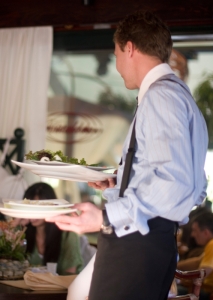 There is an alarming new trend cropping up among young people across the country. Teens looking for a quick buzz are turning to internet videos and gossip from friends to learn about ways to distill and consume the alcohol in hand sanitizer products. Many teens take on the attitude that they are young and invincible, nothing bad will happen to them. Unfortunately, with risky behavior such at this, hospitals are seeing an increase in the number of young people being treated for alcohol poisoning, and doctors are concerned this may become a growing, and dangerous fad.
There is an alarming new trend cropping up among young people across the country. Teens looking for a quick buzz are turning to internet videos and gossip from friends to learn about ways to distill and consume the alcohol in hand sanitizer products. Many teens take on the attitude that they are young and invincible, nothing bad will happen to them. Unfortunately, with risky behavior such at this, hospitals are seeing an increase in the number of young people being treated for alcohol poisoning, and doctors are concerned this may become a growing, and dangerous fad.
Liquid hand sanitizer is the latest in a string of household products groups of teens are using to get drunk, and it has public health officials and parents concerned. A few squirts of hand sanitizer could equal a couple of shots of hard liquor. Liquid hand sanitizer is 62-65% ethyl alcohol, or ethanol, the main ingredient in beer, wine and spirits, making it 120-proof. To compare, a bottle of vodka is 80-proof (ABC News). With recent reports indicating that more than 50% of of 18-20 year olds in Nevada have engaged in underage drinking within the past month, this is definitely a trend that health officials, parents, and servers and sellers of alcohol should be aware of the dangers of, and working to spread the word about (SAMHSA).
Hand sanitizer isn’t the only over the counter product that can be dangerous when used incorrectly. Common over-the-counter drugs can contain up to 10% alcohol. Cough syrup and laxatives may have some of the highest alcohol concentrations, and are readily available to young people (NIAAA). Some pharmacies and retailers have moved select cough suppressants and other drugs behind the counter, but retailers should remain vigilant about responsible sales of both alcohol and over the counter medications and always follow company policies and procedures, and local and state laws, for such sales.
Also keep in mind, that teens aren’t the only group that is susceptible to risky behaviors with over-the-counter and household products. Alcohol and drug interactions are another common problem to be aware of, and customers could inadvertently be at risk for adverse effects. Make sure to read our blog post, “Risky Business – How to Spot & Deal with Alcohol-Drug Interactions,” for more information on how to handle such situations.
Resources
- Teens Getting Drunk on Hand Sanitizer – ABC News
- Nevada State Profile and Underage Drinking Facts – Substance Abuse and Mental Health Services Administration
- Harmful Interactions – Mixing Alcohol with Medicine – National Institute on Alcohol Abuse and Alcoholism
© 2012 National Hospitality Institute®, TAM® of Nevada


